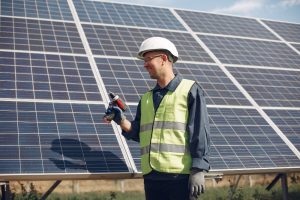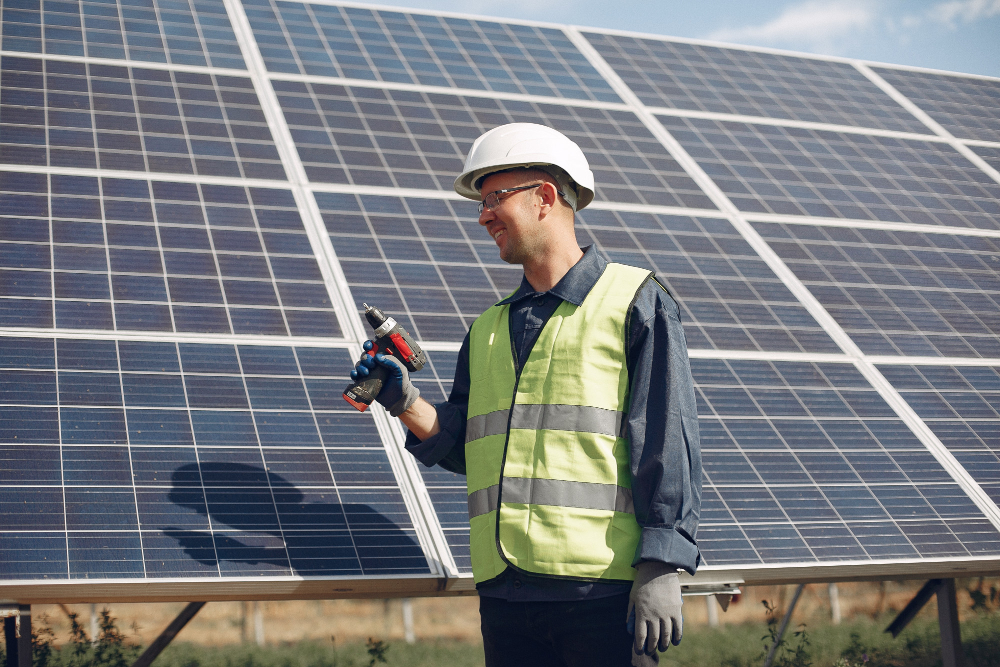The solar module industry in Australia is experiencing rapid growth and evolution. As a country blessed with abundant sunlight, Australia is perfectly positioned to take advantage of solar energy. Here’s the future trends, technological innovations & market dynamics that will shape the Australian solar module industry.
Technological Innovations
- Efficiency Improvements: One of the major trends in the solar PV (photovoltaic) industry is the continuous improvement in the efficiency of solar panels. Manufacturers are focusing on creating solar PV panel modules that can convert more sunlight into electricity. This is achieved through advances in materials and cell technology. For instance, perovskite solar cells and tandem cells are expected to play a significant role in boosting efficiency beyond the current limits of silicon-based cells.
 Bifacial Solar Panels: These panels can capture sunlight from both sides, increasing energy production without needing additional space. In Australia, with its vast open areas and high levels of sunlight, bifacial panels are likely to become more popular, especially for large-scale solar farms.
Bifacial Solar Panels: These panels can capture sunlight from both sides, increasing energy production without needing additional space. In Australia, with its vast open areas and high levels of sunlight, bifacial panels are likely to become more popular, especially for large-scale solar farms.
- Solar PV Integration with Storage: The integration of solar PV systems with battery storage is becoming more viable and affordable. This allows for energy to be stored during the day and used at night, addressing the intermittency problem of solar power. Companies are developing better battery technologies, which will likely lead to more homeowners and businesses adopting solar PV with storage solutions.
- Flexible and Lightweight Solar Panels: Innovations in making solar PV panels flexible & lightweight are opening new avenues for their application. These panels can be installed on unconventional surfaces, such as curved roofs and vehicles, broadening the scope of solar energy usage.
Market Dynamics
- Growing Demand and Market Expansion: The demand for solar PV systems in Australia is expected to continue growing, driven by increasing electricity prices and a strong push towards renewable energy. Government incentives and rebates also play a crucial role in encouraging the adoption of solar PV panel modules.
- Local Manufacturing: There is a rising interest in supporting local solar PV manufacturers to reduce dependency on imports. This not only helps in creating jobs but also ensures a more secure supply chain. Australian manufacturers are likely to receive more support in the form of grants and favorable policies.
- Grid Modernization and Decentralization: As more solar PV systems are installed, there is a growing need to modernize the grid to handle distributed energy resources. This involves upgrading infrastructure to manage energy flow more effectively and ensuring grid stability. Decentralization allows for more localized energy production and consumption, reducing transmission losses and enhancing reliability.
- Corporate Adoption and Sustainability Goals: More companies are committing to sustainability goals, leading to increased adoption of solar PV systems. Corporations are installing solar panels on their facilities to reduce carbon footprints and operational costs. This trend is likely to accelerate as businesses aim to meet environmental targets.
Frequently Asked Questions (FAQ)
Q: What are the benefits of installing solar PV panel modules in Australia?
A: Solar PV panels help reduce electricity bills, lower carbon footprints and provide energy independence. Australia’s high solar irradiance makes it an ideal location for solar energy production.
Q: How do solar PV systems work with battery storage?
A: Solar PV systems convert sunlight into electricity during the day. With battery storage, excess energy can be stored and used at night or during cloudy periods, ensuring a consistent energy supply.
Q: What should I consider when choosing a solar PV manufacturer?
A: Look for manufacturers with a strong track record, high-quality products and good warranties. It’s also important to consider after-sales service and support.
Q: Are there government incentives for installing solar panels in Australia?
A: Yes, there are various incentives such as the Small-scale Renewable Energy Scheme (SRES) and state-based rebates and feed-in tariffs, which can significantly reduce the cost of installation.
Q: What are bifacial solar panels?
A: Bifacial solar panels can capture sunlight on both the front and back sides, increasing the overall energy output compared to traditional single-sided panels.
Q: How is the efficiency of solar PV panels improving?
A: Advances in materials, cell technology, and manufacturing processes are continuously pushing the efficiency of solar panels. Technologies like perovskite and tandem cells are leading this improvement.
Q: Is solar energy a good investment for businesses?
A: Yes, solar energy can reduce operational costs, provide energy security and help businesses meet sustainability goals. The initial investment is often offset by long-term savings and incentives.
The future of the solar module industry in Australia looks bright, with technological innovations and supportive market dynamics driving growth. As efficiency improves and costs decrease, solar PV panel modules will become an even more attractive option for both residential and commercial use.


